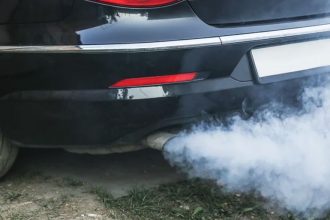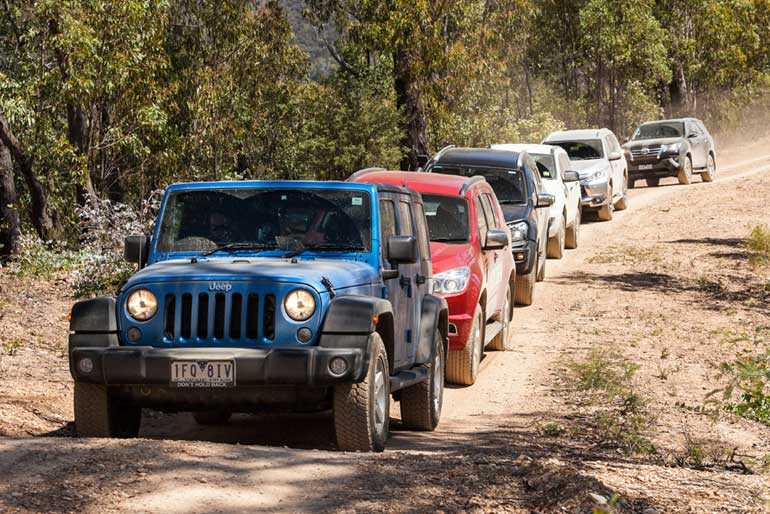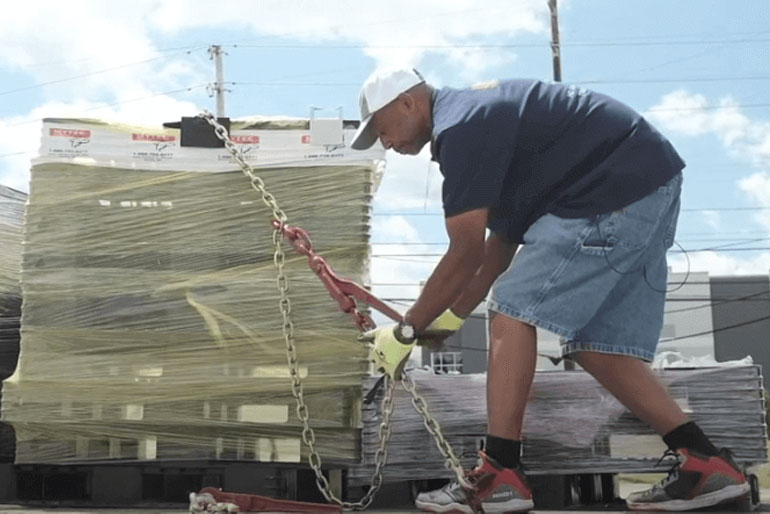One of the more common trucking tools used to tighten tie-down chains over cargo. Also called trucking, load, or chain binders, they’re heavy-duty and durable chain binders usually made from high-quality steel and are often designed with or for grab hooks and other end-fittings fixed to either end of the chain binder.
Chain binders are used most frequently with flatbed truckers and are available in a variety of styles and sizes, all with their own working load limits. Having your cargo fastened down safely and securely is integral to the safety of your cargo and fellow motorists. When using chains, you can only get them as tight as your hands will allow. Having a good, heavy-duty chain binder will ensure you get your chains as tight as they need to be – keep reading to learn some more helpful tips and things to consider when looking for and using load binders.
Types of Load Binders to Consider
Load binders are typically available in two styles, though different manufacturers may have their own unique designs or spins on these two types: Lever and Ratchet. Available in a variety of sizes and working load limits, these binders are guaranteed to help you complete your jobs efficiently if you use them properly.
1. Lever Binder
Lever binders also called snap binders and truck load binders, are designed to tighten chains easier and faster, as well as quick tightening for any sudden load shifts. The lever is built to rotate 180-degrees and provides a lot of leverage for tightening and locking the chain in position.
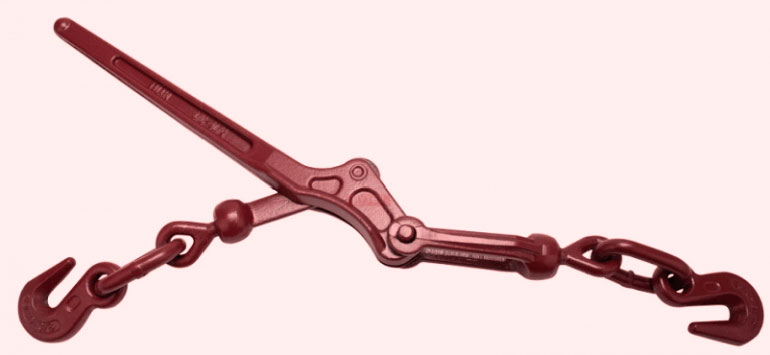
Lever load binders are ideal for securing heavy-duty cargo to flatbed trailers. With fewer moving parts, it is easier to maintain and clean! However, one flaw of the lever binder is the fact it stores energy, so operators need to be careful to avoid any handle recoil that could cause injury.
2. Ratchet Binder
Ratchet load or chain binders are designed with safety in mind! It has a ratcheting mechanism built in to help with tensioning a chain around cargo for transport. Unlike the lever load binder, ratchet binders do not store energy in the handles, which prevents the handle from being able to recoil back at the operator.
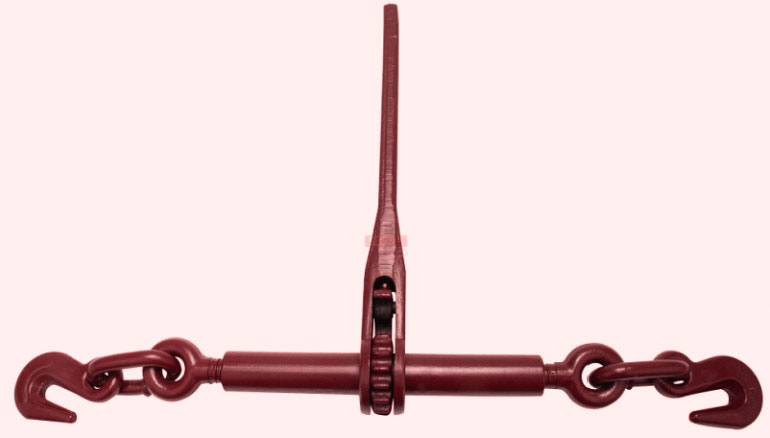
However, speed is sacrificed for this safety. It will take a trucker longer to fasten cargo to their trailer using a ratchet binder compared to a lever load binder; it’s also more difficult to tighten for load shifts when using ratchet binders.
Consider the Chain Binders Size
Chain binders come in a variety of sizes, depending on the working load limit you need and the type of binder you prefer. When choosing a load binder size, it’s important to keep the working load limits of both the binder and chain in mind.
You will find two size stamps on professionally made, reliable load binders: for example, the size ¼’’ load binder -5/16’’ load binder means it can be used with ¼’’ Grade 70 trucker chains or 5/16’’ Grade 43 test chains. A helpful tip to remember is that the strength of a chain binder will be weaker than the chain you use!
How Many Binders Do You Need?
Chain binders are typically designed to tighten chains and secure a load for transport. However, knowing how many chain binders you will need to get the job done right depends on the weight of the load you intend to carry.
The FMCSA has regulations in place that one should consider before hauling. According to the FMCSA, a vehicle could require 4 load binders to tighten all four corners of the vehicle down to a trailer. However, this is different from the requirements of strap tie-downs. If the length of the chain you’re using for securement is less than or equals five feet, you can use just one load binder.
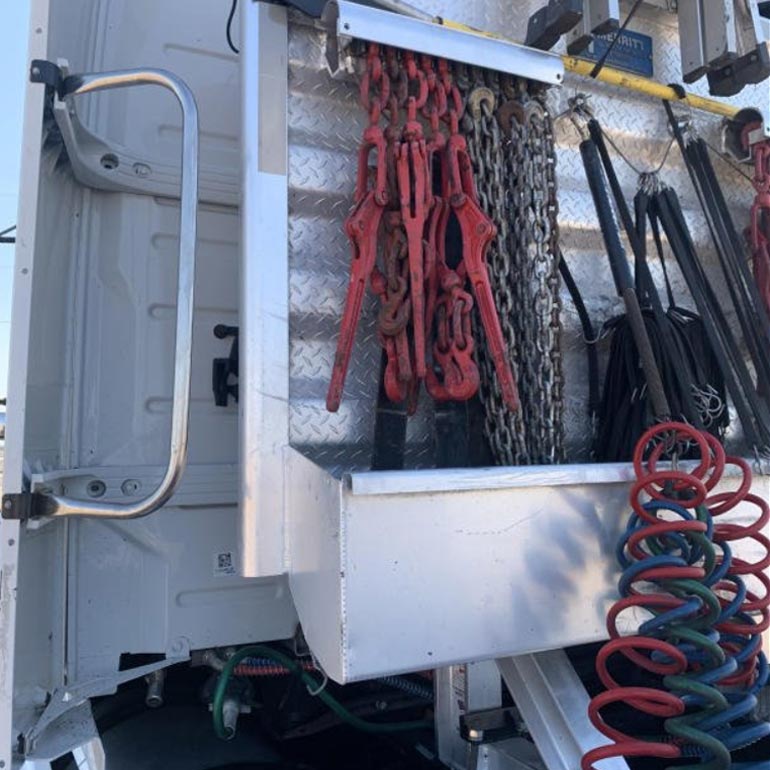
Chains 5 to 10 feet in length require 2 load binders, and you continue to use this method for the size and amount of chains you plan to use. As long as you ensure the working load limits of your chains and binders do not exceed what they’re built to withstand and your cargo or vehicle is secured where it needs to be, you will be following the proper DOT and FMCSA rules during transit.
Types of Trailers
While there isn’t a rule or requirement when it comes to the type of trailer you need to use in order to properly secure load binders, always ensure that you have plenty of anchor points on your trailer or where you plan to load your cargo. You will add unnecessary stress and tension to your chains if you try to make them reach an anchor point that may be too far away for safe securement.
Type of Loads
Regardless of the type of load you intend to transport, always make sure you use enough chains to secure your cargo without exceeding the chain or binder working load limits. When transporting vehicles, keep these tips in mind:
- Secure a vehicle to the trailer using a minimum of four tie-downs with a minimal working load limit of at least 5,000 pounds.
- Always ensure your vehicle or machinery is in park, have wheel chocks in place, or immobilize any wheels before you start securement.
- Chain tie-downs should be attached at the front or rear of any vehicle cargo at a 45-degree angle, connected to the mounting points on the vehicle and trailer.
How Much Does a Chain Binder Weigh?
A common question about chain binders seems to regard their weight. The weight of a chain binder varies depending on the style, brand, end-fittings, and size. However, you can expect chain binders to add between 3-5lbs all the way up to 20lbs to your carry weight. Of course, using a heavier, larger chain will require you to use a heavier binder.
Knowing the weight of your chain binder can be important when ensuring that you aren’t exceeding the carrying capacity of your trailer. Don’t add additional weight if you can avoid it! If you can safely use smaller, lighter chains and binders, you can increase the amount of weight your trailer will be able to haul.
Tie-down Rules to Consider BEFORE Buying Chain Binders
When trying to decide how many load binders to buy, you’ll need to know what the federal and state laws are. Federal regulations and state requirements will often provide guidelines for truckers to follow when using specific trucking equipment. There will be variables depending on the states you haul in, however the FMSCA provides general guidelines for properly securing loads.
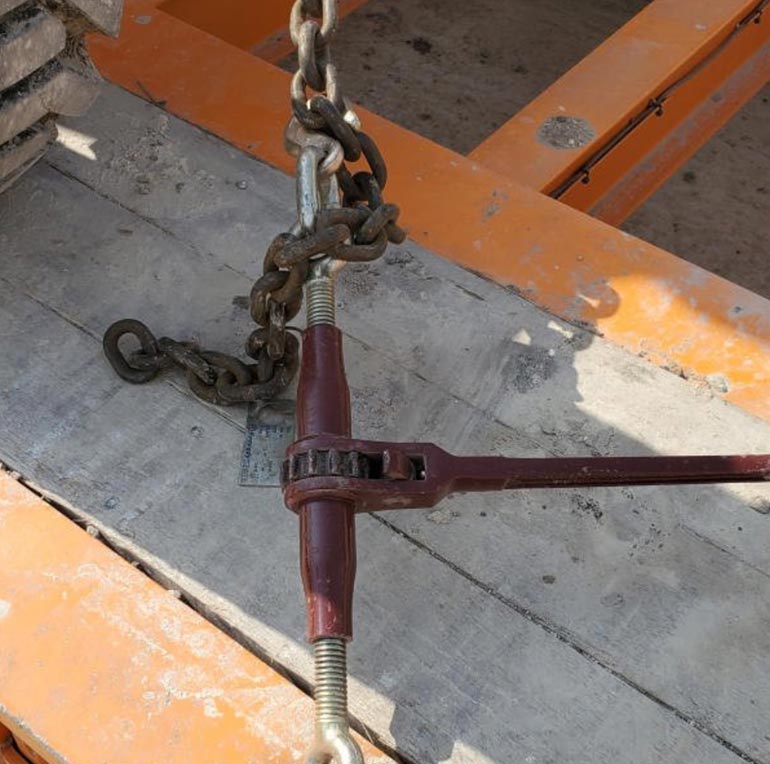
Vehicles with wheels or tracks that weigh 10,000 lbs or above are required to be tied down and secured on all four corners of the vehicle at a minimum. This weight also requires four anchor points and tightening devices, such as binders. Additionally, the length of your load plays an important part in determining how many chain binders you will need to safely and legally haul your cargo. Loads 5 feet or less require just one tie-down as long as it’s less than 1,100lbs. Loads longer or heavier than this require two tie-downs.
While we hope this guide will help you find the right chain binders to get your jobs done quickly and safely, it’s important to remember that load binders are only as safe as you use them. Using chain binders improperly or using damaged or low-maintained binders could result in damage to the binder, chain, cargo, or you! Always make sure you’re using chain binders as is recommended. Never exceed the working load limits or use them in improper applications.


